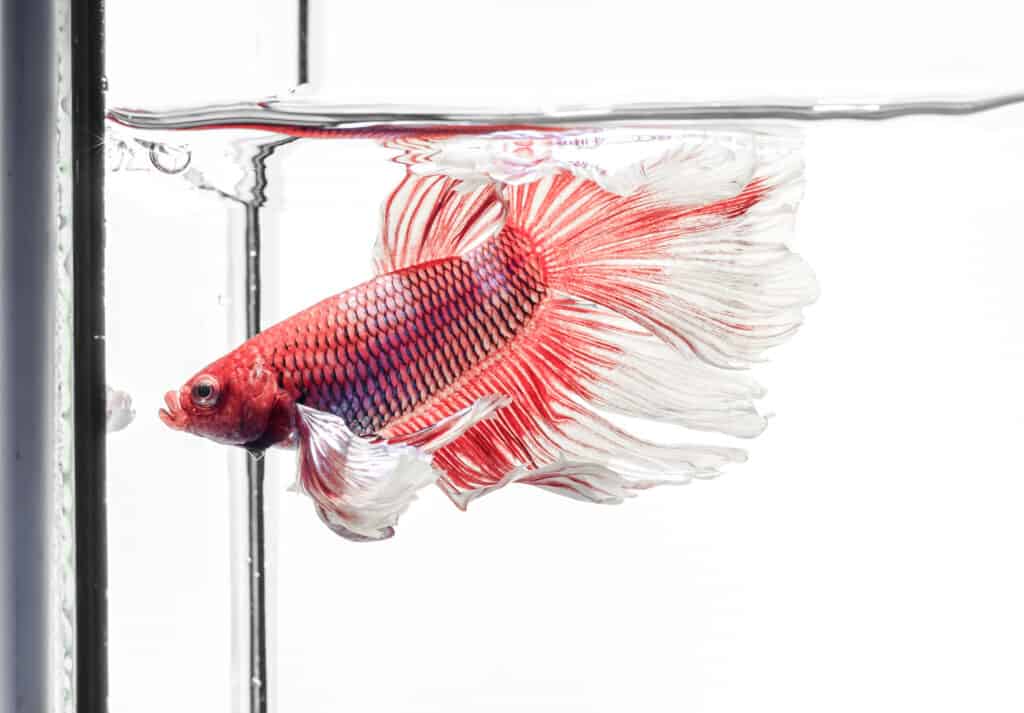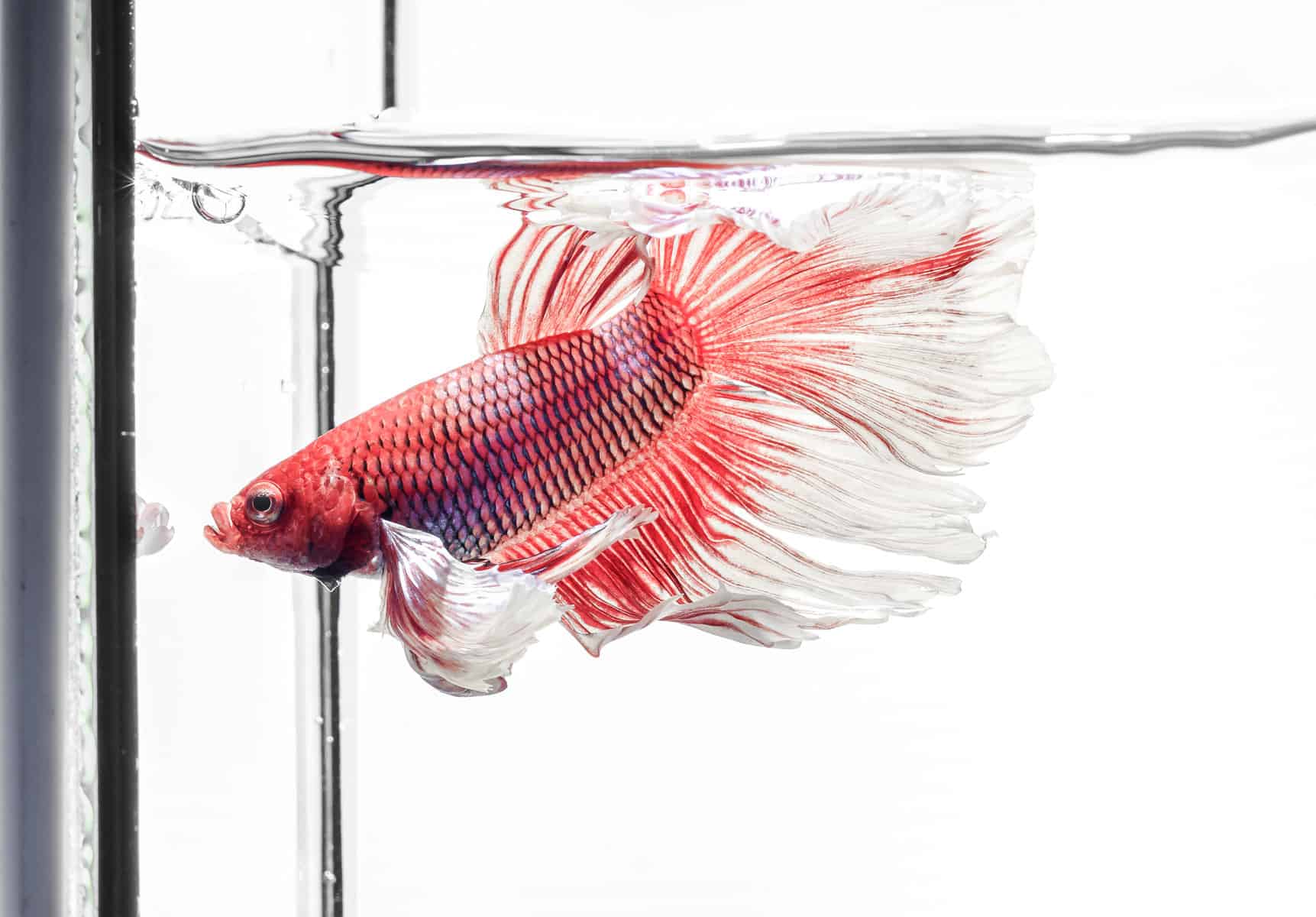Betta fish are often the first breed that fish owners attempt to keep, and for a good reason. Their beautiful colors and front and center placement at the pet store draw your attention, even if you’re shopping for cat litter, and they’re supposed to be the easiest breed to take care of; just put them in water and remember to feed them, right?
Not exactly. While bettas are much more independent than some other breeds, mainly because they’re freshwater fish, there’s a little more to preparing your betta’s tank than filling it with water from the sink.
What Type of Tank Do Bettas Need?
At a minimum, a betta fish aquarium should hold at least three gallons of water.
The little fish bowl you had as a kid just won’t do for your new friend. Your betta needs plenty of room to grow and get enough exercise. Think about it; if you only had a few inches of space around you for your entire life, you wouldn’t be too happy.
Check out these tips on identifying and alleviating your betta’s boredom.
The Type of Water You CAN’T Use
Now that your tank is filled with all the pretty rocks and decorations that were just calling your name, it’s time to add the water. But you can’t use just any water.
So what are the kinds of water you can’t use? You may be surprised, but distilled water is a big no-no for bettas–and any other fish!
The distillation process removes everything–good and bad–from the water, so all the nutrients and essential minerals the fish need to survive are eradicated.
The Water You SHOULD Use for Your Betta
When determining if a type of water is safe for your betta, spring water, bottled water, and tap water all follow the same rule: yes, but it needs to be treated.
Bottled spring water is the closest to a betta-ready option because the harmful chemicals have been removed, but the pH level needs to be tested, and the water needs to be treated.
For bettas, the pH level should be as close to 7 as possible, and you can usually buy a pH tester at your local pet store.
Now let’s talk about tap water. If you live in an area where you usually don’t drink tap water, you should definitely treat it before filling your fish tank with it. Even in areas where the tap water is perfectly safe for human consumption, untreated tap water is still not safe for your finned friends.
What Is Water Treatment and How Do I Do It?
While it may sound complicated and time-consuming, treating your water to prepare for your betta is as simple as adding a little conditioner, and no, I don’t mean the kind for your hair.
When getting your supplies at your local pet store, be sure to ask about aquarium water conditioners, and they’ll be able to recommend one they carry.
Once you have your tank filled with tap or spring water, follow the dosing instructions on the water conditioner for your tank size (it shouldn’t be much).
As soon as you pour in the conditioner, that little bit of liquid starts working its magic, and you’ll have a nearly hospitable tank for your new betta.
Now It’s Time To Check the Temperature
Neither humans nor bettas like cold water. The optimal water temperature for a betta is 75-80 degrees Fahrenheit 23-26 degrees celsius.
Don’t worry; you don’t have to keep your house at 80 all year round. At your pet store, they should have a small, energy-efficient water heater made to keep your tank at a steady temperature.
These heaters come in all shapes and sizes, and you’ll want to ensure you get the right one for the size of your tank. You’ll want to set up your heater in your tank (with water! Never run a fish tank heater dry) overnight before you bring your betta home.
A 5-gallon tank can take 15-20 hours or more to heat up, so allow plenty of time before you relocate your fish buddy.
Congratulations! You’re Now the Proud Owner of a New Betta
You’ve done all the research, got your tank set up, waited the pain-staking hours for the water to heat up, and finally picked out your favorite betta at the pet store. Before dropping your new friend into the tank, there’s one more step to ensure your fish is comfortable.
You probably got your betta at the pet store in either a plastic bag or a small plastic cup with a lid. Before you open it, place the bag or cup in the tank’s water, making sure it’s floating.
This allows the temperature of the water the fish is in to slowly match the tank’s water, giving your betta time to adjust. This process is called acclimation and is essential to avoid the shock and stress caused by a sudden temperature change.
Set a timer for 30-60 minutes, depending on how different the temperatures are. Once this timer goes off, you can slowly and carefully release your new pet into its forever home.
Here’s a Quick Shopping List for the Pet Store
- Tank (at least three gallons)
- pH Tester
- Water Conditioner
- Tank Water Heater
- Tank Decorations (optional, but highly recommended)
- Betta Fish (required)
Whether this is your first dive into fish ownership, you want to improve your betta’s water conditions, or you’re just curious, I hope you learned something new about your fishy friends.
Even if you follow all the instructions carefully, things can still go wrong, so always keep an eye on your betta for the first week or two after putting it in a new tank to make sure everything is going swimmingly.

